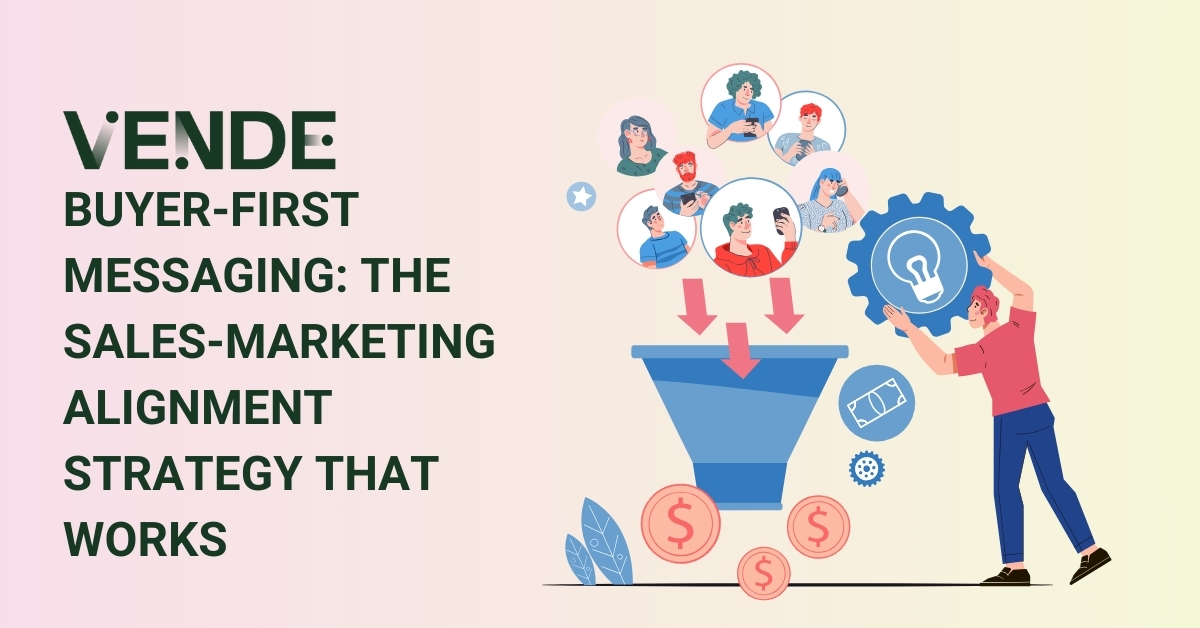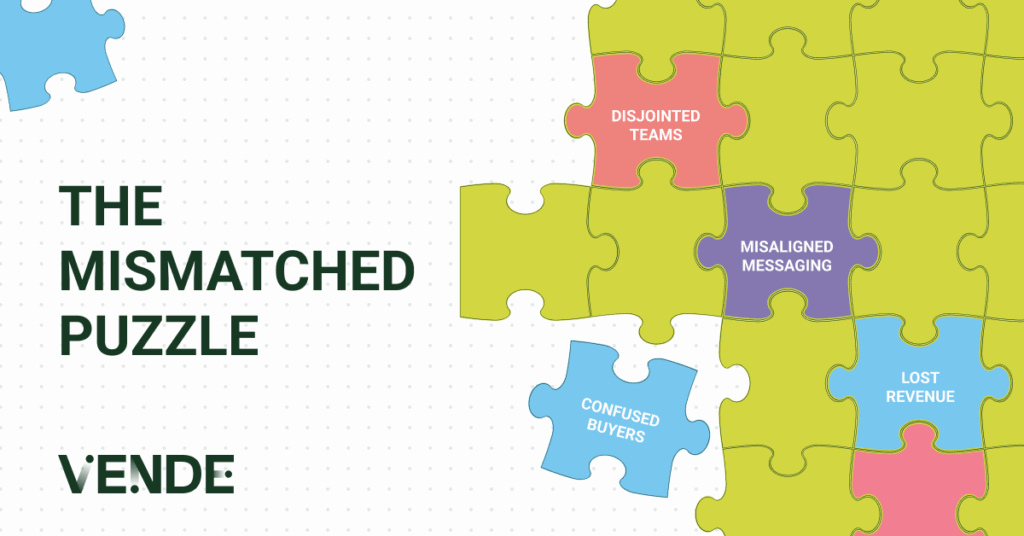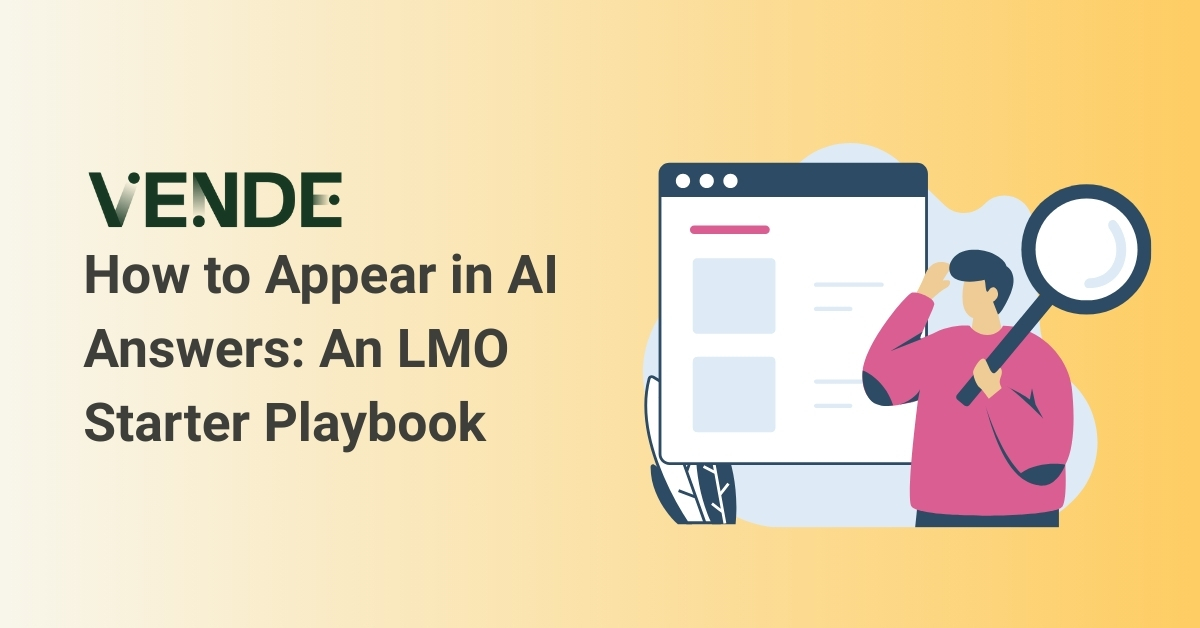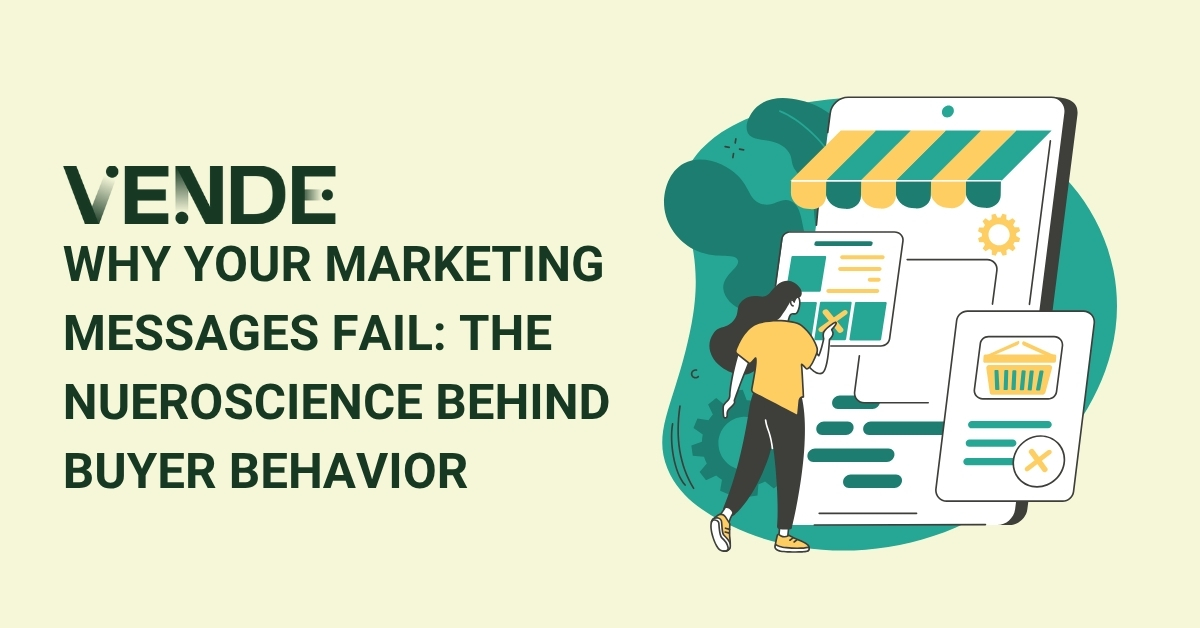
Buyer-First Messaging: The Sales-Marketing Alignment Strategy That Works
Your buyers don’t care how smart your product is—they care how it solves their problem. If your sales and marketing teams aren’t aligned around that truth, buyer-first messaging can change the game. It shifts the focus away from features and toward what buyers actually need—helping you stop revenue leaks you may not even realize are happening.

Sound familiar? It should. Modern B2B buyers expect relevance, empathy, and solutions tailored to their needs, often long before they’re ready to talk to a sales rep.
Yet countless sales and marketing teams still approach leads with mismatched messaging and disconnected narratives, like puzzle pieces that don’t quite fit together. This leaves buyers frustrated and revenue on the table—especially as we shift toward a clickless future, where traditional lead-gen tactics are losing ground.
That’s the power of buyer-first messaging! It flips the script on outdated product-first marketing and helps teams craft a unified story that guides buyers through their decision-making process. When your messaging is aligned, your pipeline flows more smoothly—and your prospects actually feel heard.
If you want to stop losing opportunities and start creating meaningful connections with buyers, you’re in the right place. Let’s break down why buyer-first messaging works and how to use it to bring your sales and marketing teams into sync.
What Is Buyer-First Messaging in B2B Sales and Marketing?
A New Standard for Connecting with Modern Buyers
At its core, buyer-first messaging is exactly what it sounds like—a content and engagement strategy rooted in the buyer’s priorities, challenges, and desired outcomes. It’s a breath of fresh air compared to the traditional approach of touting product features or chasing arbitrary MQLs with irrelevant tactics.
Instead, buyer-first messaging flips the narrative with questions like:
- What does the buyer actually need?
- What challenges keep them awake at night?
- What kind of guidance or insight are they looking for, often before they know they’re looking for it?
Consider this shift in tone:
- Old-school product-first message: “Our software reduces churn by 20% with automated workflows.”
- Buyer-first alternative: “Revenue leaders tell us early churn is crushing renewal goals. Here’s how they’re solving the problem before it starts.”
Which one do you think resonates more?
This buyer-first lens also helps sales and marketing teams align their messaging, so they speak the same language to prospects from their first click to their final negotiation call. It’s like finding the right puzzle piece. When sales picks up where marketing left off, the “Buyer’s Problem” piece fits perfectly into the larger picture, while the “Product Features” piece, on its own, doesn’t complete the story. This alignment ensures a seamless and compelling journey for the buyer, free of contradictions or gaps.

Why Buyers Demand This Approach
Modern buying behaviors demand empathetic, problem-solving messaging. Today’s buyers prefer to educate themselves before engaging with sales, and they’re skeptical of anything that feels like a hard pitch. Modern LMO strategies are changing how that education happens, making it even more important to show up with buyer-relevant messaging early in the journey.
If you can meet buyers where they are, with empathetic messaging to guide them, you’ll win their attention. If you don’t? Well, you’ll join the increasing pool of organizations losing potential revenue to misalignment and missed opportunities.
How Buyer-First Messaging Drives Sales and Marketing Alignment
Creating a Unified Narrative That Builds Trust and Pipeline
Alignment between sales and marketing is often easier said than done. Classic friction points—like inconsistent goals, separate messaging playbooks, and a lack of actionable data usually leave buyers stuck in disconnected experiences.
Buyer-first messaging bridges this gap. How? By giving both teams a shared focus and language rooted in what buyers care about. For instance:
- Shared buyer insights: Start with research from both teams, including voice-of-customer insights, objection-handling trends, and CRM data.
- Consistent storytelling: Build messaging collaboratively based on buyer challenges, not departmental silos.
- Relevant enablement content: With aligned messaging, sales and marketing can co-create content that speaks directly to buyer pain points that salespeople actually use.
Here’s a practical tip to make this magic happen. Consider running regular Buyer Story Reviews, joint sessions where sales and marketing teams dissect what buyers think, feel, and ask. This shared exercise can surface pain points, hidden objections, and fresh opportunities to refine your shared narrative.
When executed effectively, buyer-first messaging transforms sales and marketing into seamless collaborators rather than competitive silos, and your prospects notice the difference.
How to Build Sales and Marketing Alignment With Buyer-First Messaging
A Framework for Success
The magic of buyer-first messaging lies in its simplicity. Use this four-part framework to reverse-engineer your messaging and create a consistent, buyer-focused experience across touchpoints.
1. Problem
Start by identifying the specific pain point your buyer is trying to solve. Clarity and specificity are your best friends here. Avoid generic language like “boost efficiency.” Instead, get razor-sharp about your buyers' unique struggles, whether it’s “retaining top accounts during budget cuts” or “managing AI implementation with limited resources.”
2. Insight
Buyers value fresh perspectives that help them think differently about their challenges. Replace tired sales pitches with unique, problem-centric insights—for example, trends uncovered in your customer data that show why their pain point costs them more than they think.
3. Outcome
Paint a clear picture of success for your buyer. What positive change can they expect, and how does it relate to their goals? Focus on the buyer’s benefits, not your product’s specs.
4. Next Step
Every message needs a “value-forward” call to action that feels helpful, not pushy. For instance, offer an ROI calculator to visualize potential gains or a checklist inspired by real-world client wins.
Operationally, build this messaging together in joint workshops where sales and marketing collaborate on everything from funnel-stage messaging to objection-handling strategies.
Common Buyer-First Messaging Mistakes (and How to Avoid Them)
Avoid These Pitfalls That Derail Alignment
Even the best strategies can go sideways without the right execution. To keep your efforts buyer-first (and not buyer-lost), avoid these common mistakes:
- Leading with your product instead of the buyer’s problem
- Developing separate messaging playbooks for sales and marketing
- Ignoring real voice-of-customer insights from sales calls
- Assuming one-size-fits-all messaging works across buyer roles
- Failing to iterate your messaging based on performance and feedback
The fix? Agile collaboration between teams, plus a shared commitment to putting your buyer at the center of every decision.
Real-World Wins From Buyer-First Messaging
Lessons From the Field
Still skeptical? Consider this example from a SaaS company that shifted its approach to buyer-first messaging.
Instead of running generic “demo now” campaigns, the company collaborated with its sales team to co-create ads targeting specific buyer pain points (like churn and feature adoption). The results?
- A 20% increase in SQLs
- A smoother handoff from marketing to sales
- Sales adoption of marketing content tripled
When sellers and marketers unite under a single buyer-first strategy, real results follow at every stage of the funnel.

Master Buyer-First Messaging to Unite Teams and Drive Pipeline
Key Takeaways
🔄 Buyer-first messaging puts the buyer’s needs—not your product—at the center of your strategy.
✔️ It’s the ultimate alignment tool, helping sales and marketing craft a unified narrative that drives engagement and trust.
📈 Done right, it’s the foundation for better buyer journeys, more productive teams, and measurable revenue growth.
Next Steps
Want to align your sales and marketing teams around a buyer-first strategy that works?
✅ Audit your existing messaging for “we-first” language and focus on buyer challenges.
✅ Run quarterly workshops to co-create content based on buyer insights and real-world stories.
✅ Download our B2B Marketing Strategy Guide or schedule a call to see how we help companies like yours create messaging that fuels revenue, not just clicks.
Stop talking at your buyers—and start solving for them.







